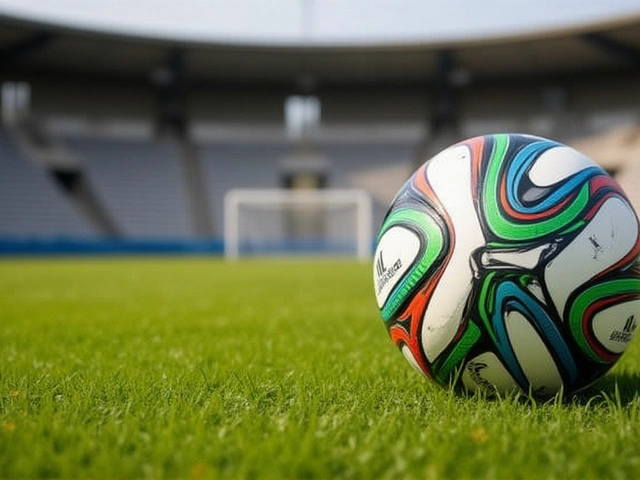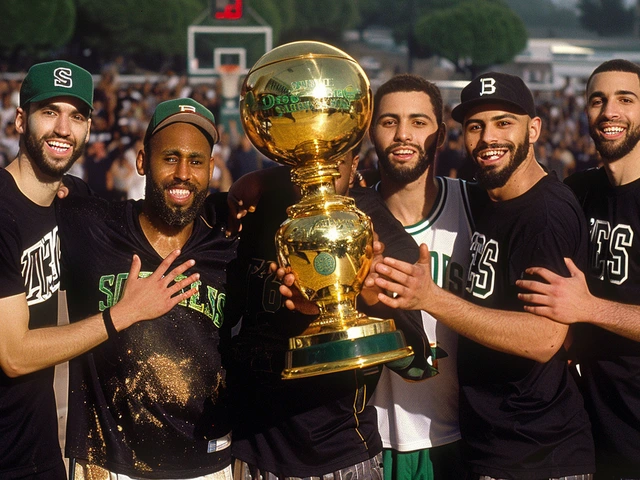On October 27, 2025, the FIFA Global Citizen Education Fund opened its doors to grassroots organizations worldwide, offering grants between $50,000 and $250,000 to bring education and football to children in the most marginalized communities. With a deadline of December 31, 2025, and award notifications set for early February 2026, this initiative isn’t just about funding—it’s about reshaping how the world sees the power of sport beyond the scoreboard. The fund, a partnership between FIFA and Global Citizen, aims to raise $100 million to break cycles of poverty through learning and play. So far, over $30 million has been secured, thanks to donations from the Global Citizen Festival and $1 from every ticket sold to the FIFA Club World Cup™ 2025.
Why This Matters Beyond the Pitch
For decades, football has been a universal language. But now, it’s becoming a classroom. The fund’s dual focus—half going to grassroots education programs across 200+ countries, the other half to the FIFA Football for Schools Programme in partnership with UNESCO—isn’t accidental. It’s strategic. In places where schools are crumbling or nonexistent, football pitches become learning hubs. Coaches double as mentors. Ball drills teach math. Teamwork lessons replace rote memorization. And for girls in conservative regions, access to a ball can mean access to dignity.
"Education is not charity—it’s the single most powerful investment we can make to end extreme poverty in our lifetime," said Hugh Evans, Co-founder & CEO of Global Citizen. His words carry weight. He’s not just talking about books and desks. He’s talking about breaking generational trauma.
Who Can Apply—and Who Can’t
The rules are strict, but fair. Only legally registered nonprofit organizations operating at the community level qualify. They must serve between 500 and 10,000 people, have at least three years of audited financial records, and prove they’re not asking for more than half their annual budget. And here’s the kicker: no reapplications. This isn’t a recurring grant program. It’s a one-shot lifeline designed to ignite change, not sustain dependency.
Applicants must also show how they use sport as a tool for learning. A soccer clinic that teaches literacy through jersey numbers? Good. A playground with no curriculum? Not enough. Selection hinges on four pillars: Equity and Inclusion (who’s being left out?), Socioeconomic Indicators (how deep is the need?), Geographic Representation (are we covering Africa, Southeast Asia, Latin America equally?), and Implementation Efficacy (can they actually deliver?).
Applications can be submitted in English or the applicant’s native language—a rare and thoughtful touch. One application per organization. No exceptions. And while the portal is live now, expect follow-up requests. The review team isn’t just checking boxes. They’re looking for stories.
The Ripple Effect
Winning organizations won’t just get money. They’ll join a global network of changemakers. They’ll be invited to share best practices. Some may even be invited to meet fund officials during the evaluation phase. And they’ll have to deliver: a mid-term report and a final report. No hand-waving. No fluff. Just results.
And the timing? Brilliant. Funding will be distributed ahead of the 2026 World Cup cycle. That means when the world’s eyes turn to the tournament, they’ll also see the classrooms built in rural Kenya, the girls’ teams in Afghanistan, the digital learning pods in the Amazon basin—all powered by the same energy that fuels Messi’s free kicks.
What Comes Next
Applications for Cycle II are still TBD, but they’re coming in 2026. The fund’s architecture is designed for longevity. Every ticket sold to the Club World Cup, every dollar raised at the Global Citizen Festival, every corporate sponsor who signs on—each becomes part of a self-sustaining engine. The goal isn’t just to fund 150 projects in 2026. It’s to prove that football’s global reach can be a force for equity.
"Football unites the world," said Gianni Infantino, FIFA President. "And today we are harnessing that unity to make a lasting impact beyond the pitch."
That’s the real win. Not the money. Not the headlines. But the quiet transformation happening in villages where children once had no books—and now, finally, have a ball to kick, a coach to trust, and a future to imagine.
Frequently Asked Questions
Who qualifies as a grassroots organization for this grant?
Eligible organizations must be legally registered nonprofits operating locally, serving between 500 and 10,000 individuals, with at least three years of audited financial records. They must use sport—especially football—as a core educational tool, not just a recreational activity. Community centers, youth clubs, and faith-based education groups qualify; national NGOs or international charities do not.
Can organizations apply in languages other than English?
Yes. Applications can be submitted in the applicant’s native language, with translation support available through the Global Citizen portal. This is a deliberate effort to remove language barriers that often exclude rural and indigenous groups. Additional language versions are expected to roll out by November 2025, but submissions in any language are accepted now.
How is the $100 million goal being funded?
Over $30 million has already been raised through the Global Citizen Festival campaign and corporate partnerships. The remaining funds will come from $1 contributions tied to every ticket sold for the FIFA Club World Cup™ 2025. Additional support is expected from FIFA’s global sponsors and public donations through the fund’s official portal. No government funding is involved.
Why can’t organizations reapply in future cycles?
The fund’s design prioritizes breadth over repetition. By limiting each organization to one grant, the program ensures resources reach as many communities as possible. The idea is to spark scalable models—not create dependency. Organizations that succeed are encouraged to seek other funding or partner with others to expand their impact.
What happens if an organization doesn’t submit the required reports?
Failure to submit both a mid-term and final report will result in the forfeiture of remaining funds and disqualification from future FIFA Global Citizen Education Fund opportunities. Reporting is mandatory and tracked through a digital dashboard. The data collected helps refine future funding cycles and proves impact to donors and partners.
How does this differ from other football-for-education programs?
Unlike smaller initiatives, this fund is backed by FIFA’s global infrastructure and Global Citizen’s fundraising power. It’s the first to tie direct revenue from major tournaments (like the Club World Cup) to education grants. It also mandates independent oversight through its Advisory Board and requires measurable outcomes—not just participation numbers. The scale, funding mechanism, and accountability standards make it unprecedented.






Post A Comment